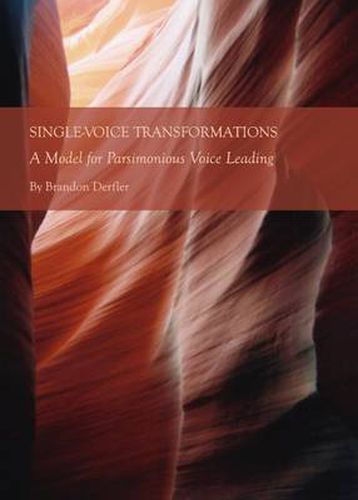Readings Newsletter
Become a Readings Member to make your shopping experience even easier.
Sign in or sign up for free!
You’re not far away from qualifying for FREE standard shipping within Australia
You’ve qualified for FREE standard shipping within Australia
The cart is loading…






This study demonstrates how smooth voice leading in music can be effectively modeled using concepts from abstract algebra. Minute voice-leading displacements are explained as iterations of the basic operation, the single-semitone transformation (SST). The SST is a type of transformation in which only a single voice in a chord is transposed by a semitone. Unlike previous music theoretic studies, the SST model does not rely on twelve-tone operations on sets to determine voice-leading paths. SST-succession classes can then be defined; they allow SSTs to be generalized as parsimonious voice-leading relations between pair-ordered set classes. Voice leading between chords of different sizes can be obtained through split and fuse operations. Once a mathematical basis for smooth voice-leading is formalized, 3D graphical representations in the form of lattices of parsimoniously related chord types can be developed. The study compares the single-voice transformational model to transformational theories of atonal voice leading and to recent work in the emergent field of neo-Riemannian theory. The final chapter examines music from tonal, atonal, and post-atonal stylistic periods by Chopin, Scriabin, Webern, Paul Lansky, and John Adams, showing the new voice-leading model’s versatility as an analytical tool.
$9.00 standard shipping within Australia
FREE standard shipping within Australia for orders over $100.00
Express & International shipping calculated at checkout
This study demonstrates how smooth voice leading in music can be effectively modeled using concepts from abstract algebra. Minute voice-leading displacements are explained as iterations of the basic operation, the single-semitone transformation (SST). The SST is a type of transformation in which only a single voice in a chord is transposed by a semitone. Unlike previous music theoretic studies, the SST model does not rely on twelve-tone operations on sets to determine voice-leading paths. SST-succession classes can then be defined; they allow SSTs to be generalized as parsimonious voice-leading relations between pair-ordered set classes. Voice leading between chords of different sizes can be obtained through split and fuse operations. Once a mathematical basis for smooth voice-leading is formalized, 3D graphical representations in the form of lattices of parsimoniously related chord types can be developed. The study compares the single-voice transformational model to transformational theories of atonal voice leading and to recent work in the emergent field of neo-Riemannian theory. The final chapter examines music from tonal, atonal, and post-atonal stylistic periods by Chopin, Scriabin, Webern, Paul Lansky, and John Adams, showing the new voice-leading model’s versatility as an analytical tool.